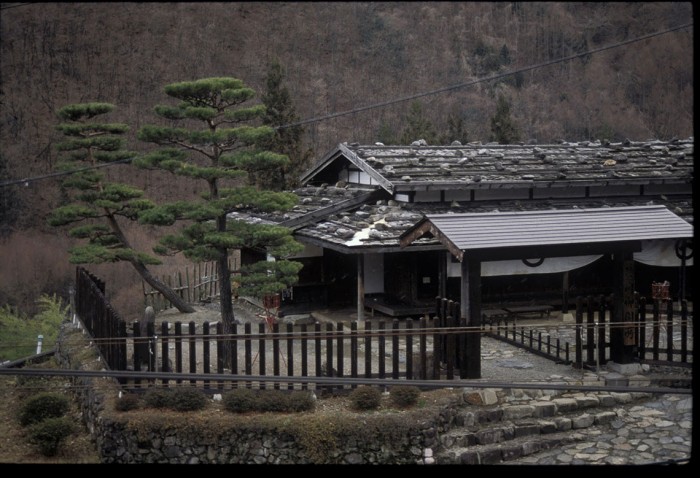
Niegawa Barrier Station is one of two seki which have been reconstructed along the Nakasendo in recent times, the other being at Kiso-Fukushima. Its origins go back to the Warring States period when local warrior lords erected many of these structures at regular intervals along the highways. Their purpose was to check on the movement of people and, equally important, to increase incomes for local domains by charging a toll on all people, horses and baggage that passed through the barrier.
As part of the process of national unification in the late 16th century both Oda Nobunaga and Toyotomi Hideyoshi issued edicts to abolish barrier stations in an attempt to reduce the powers of local daimyoThe Tokugawa shogunate later reinstated a limited number of barriers on the main highways, such as at Kiso-Fukushima and Usui in order to keep a close check on the flow of people and goods into and out of Edo. In addition, two smaller barriers were maintained on the Nakasendo at either end of the Kiso valley. One of these was at a site halfway between Magome-toge and Otsumago, at the southern end of the valley, and the other was at Niegawa. Their purpose was not only to conduct the usual checks preventing ‘firearms entering Edo and women leaving Edo’, but also to prevent the smuggling of valuable Kiso timber out of the valley. The cutting of this, the most valuable timber resource in Japan, was strictly controlled and anyone caught in illegal possession of it was liable to severe punishment.
Passing through the barrier, which was only open from six in the morning to six at night, the traveler first went through a gate with an armed guard. His baggage was thoroughly searched in the open inspection area while the traveler knelt before the open-sided main building of the barrier station to present his passport and other travel credentials. In front of him he would see four rooms. At the left-hand side was the guard room for off-duty samurai to relax. Next to this, and probably directly in front of him, was the room where passports for common travelers were received and inspected. To the right of this, on a slightly raised podium, was the ‘best room’ where the officer of the guard would himself inspect the documents of higher ranking travelers. At the far right-hand side of the building was the examination room where travelers might be searched for concealed weapons and, in a small annex behind this room, they might be strip-searched to check on sexual identity.

If all was in order the traveler could leave through a second gate, probably breathing a huge sigh of relief. To his left and right he would see a high wooden palisade stretching into the distance to prevent people sneaking past the barrier without inspection. He would also see a formidable array of weapons, ready to be used without mercy against anyone trying to avoid inspection. These barriers were indeed intimidating places, and served constantly to remind travelers of the supreme power of the shogunate authorities.

